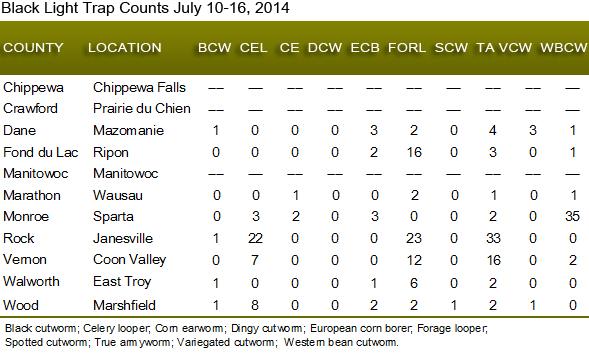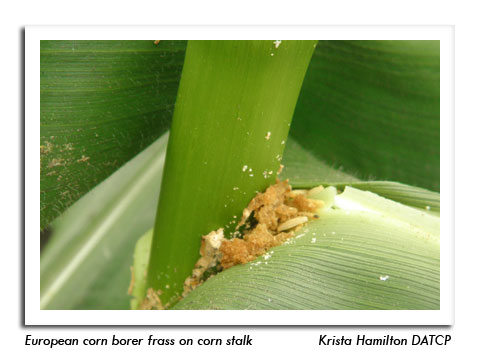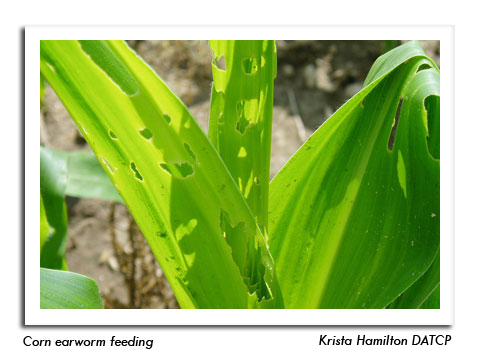
 |
|
|
Corn
Volume 59 Number 11 Date 07/17/2014 WESTERN BEAN CUTWORM - Moth emergence continued at low levels for the second consecutive week. The Wisconsin network of 98 pheromone traps registered a cumulative total of 50 moths as of July 16, which compares to 26 moths at the same time last year. Black light traps captured another 40 specimens, including the week's highest count of 35 moths at Sparta in Monroe County. Approximately 10-25% of the population has emerged across the southern half of the state. Close inspection of corn for egg masses and small larvae should be under way. The eggs are deposited in groups of 5-200 on the upper leaf surfaces and the larvae can be found in developing tassels. An economic threshold of 8% of plants infested for field corn and 4% infestation for processing sweet corn has been calculated by the University of Wisconsin. Insecticide treatments applied at 90-95% tassel emergence are most effective. EUROPEAN CORN BORER - Larval infestation rates remain about the same as reported in previous weeks, with the typical population affecting fewer than 5% of the plants and occasional fields showing 10-15% whorl feeding. Larvae ranged in development from second to fifth instar in the areas surveyed this week. The most prevalent stage was the third instar. TRUE ARMYWORM - The significant flight of 82 moths reported from Janesville last week declined to 33 this week, but continued scouting of corn and wheat is recommended. Larvae of the second generation, expected to emerge soon, can occasionally reach damaging levels in corn. The last major outbreak of second generation larvae was in August of 2005. JAPANESE BEETLE - Minor infestations of 1-19 beetles per 100 plants have been observed since early July in scattered fields in the southern and central counties. The greatest threat to corn at this time of year is when large numbers of beetles converge on corn silks, potentially impairing pollination. Control is warranted for populations that exceed three beetles per ear when pollination is occurring. -- Krista Hamilton, DATCP Entomologist 





|
|
|